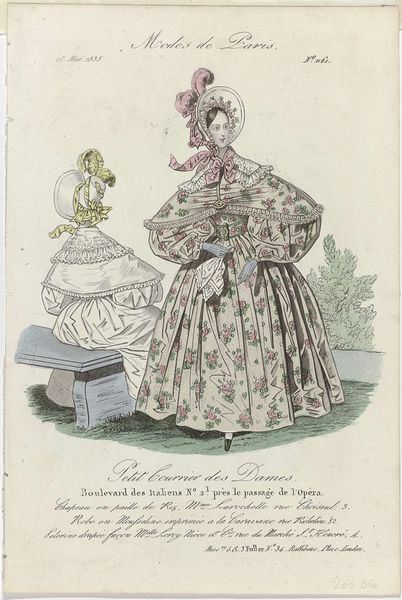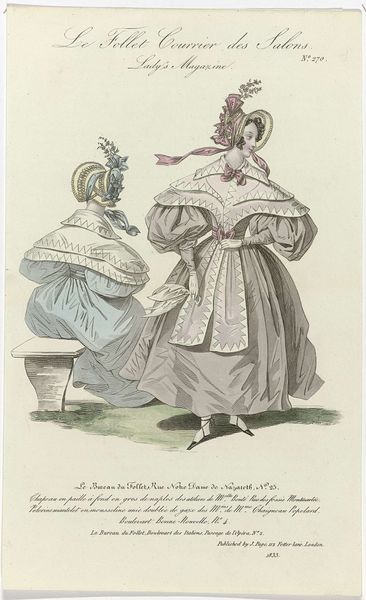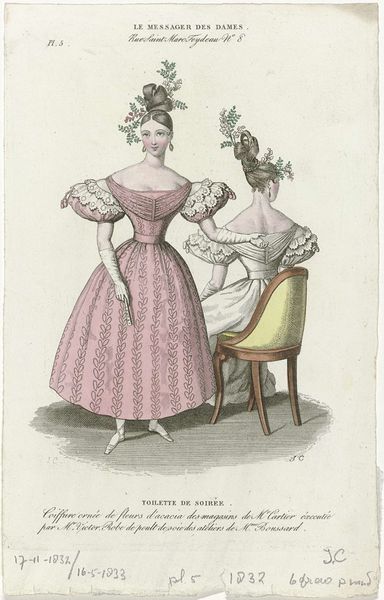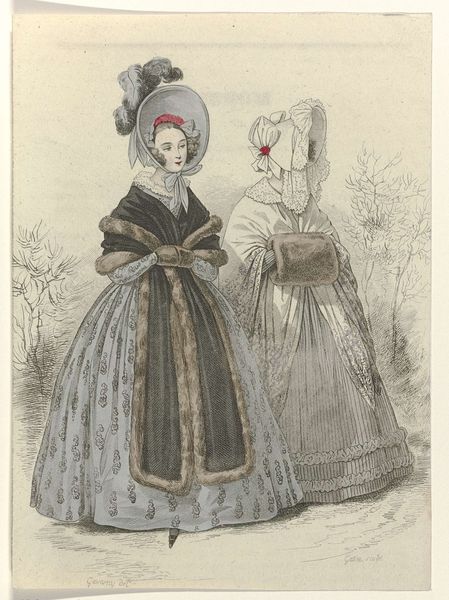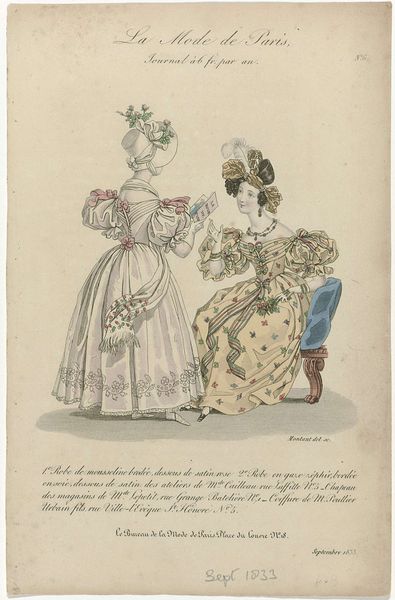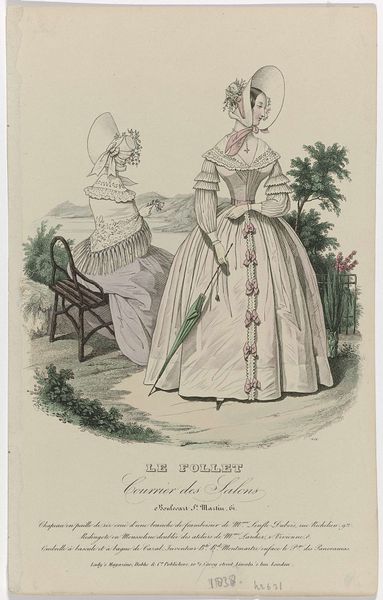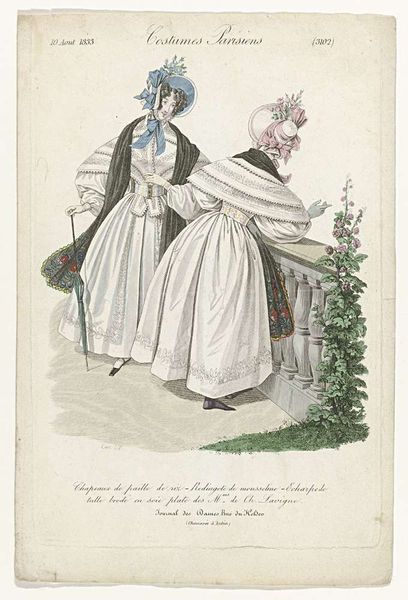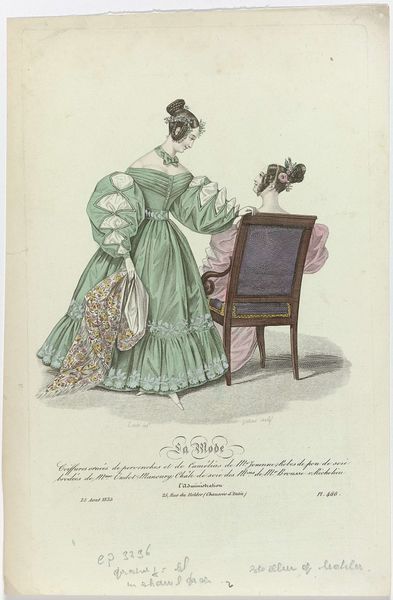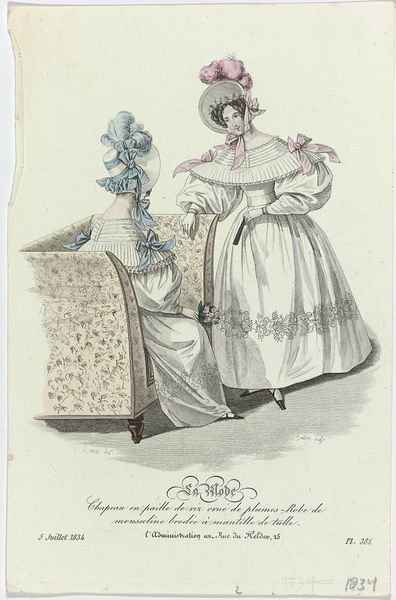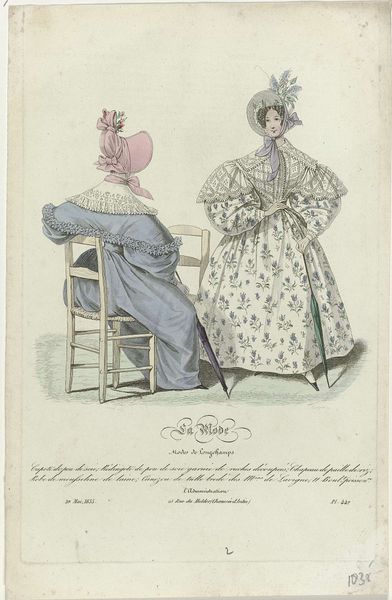
drawing, print
#
portrait
#
drawing
# print
#
figuration
#
romanticism
#
watercolour illustration
#
genre-painting
#
decorative-art
#
dress
Dimensions: height 237 mm, width 154 mm
Copyright: Rijks Museum: Open Domain
Curator: This print, titled "Le Follet Courrier des Salons, 1835, No. 429: Chapeau en paille de riz," depicts two women in fashionable dresses. It originates from 1835 and is rendered as a drawing and print. Editor: My first impression is of delicate, almost ephemeral elegance. The colors are muted, and the lines are precise yet soft, giving it a wistful and perhaps a slightly melancholic air. Curator: Yes, it's an image steeped in the aesthetics of Romanticism. The elaborate dresses, bonnets adorned with flowers—these speak to a cultural obsession with display, and an idealized femininity. Note the hat: it literally means 'straw rice hat.' Straw and rice share connotations with both poverty and wealth, sustenance and sacrifice. It's a strange visual paradox. Editor: Absolutely, and structurally, the composition is intriguing. The standing figure in the greyish-blue dress dominates, yet the seated woman provides a subtle grounding. The garden setting adds a dimension of refined leisure, the composition feels almost deliberately artificial. Curator: The women's faces, despite being somewhat stylized, still reveal a yearning. One could see this not merely as a depiction of fashion, but also a meditation on social expectation, on the burdens and aspirations projected onto women. The gaze is key; where are they looking? Editor: I’d say that from a formal perspective, the subtle variations in tone create depth. There’s a layering effect with both figures and background foliage; it enhances the overall flatness. I think that flattening contributes to the sense of an unattainable or romanticised scene. Curator: Precisely. This wasn't merely fashion illustration; these images permeated culture, shaping perceptions of beauty, gender roles, and societal status. Editor: It seems almost impossible to interpret such an aesthetic as progressive or positive when viewing from today's lens, but it is still worth pondering that original historical vision. Curator: Indeed, considering its symbolism allows a glimpse into past anxieties and ideals surrounding status. Editor: It encourages reflection.
Comments
No comments
Be the first to comment and join the conversation on the ultimate creative platform.
